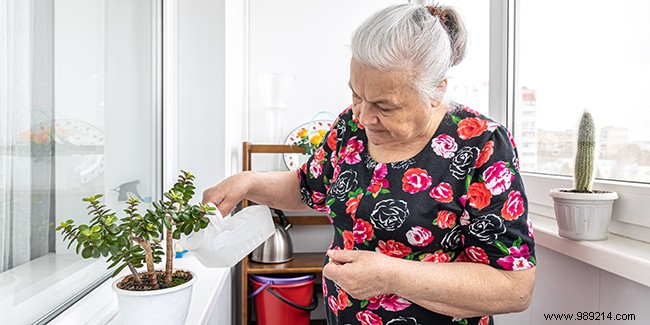
In winter, our body is put to the test. The drop in temperatures and the lack of sunshine can impact our physical health and especially our morale. You should know that for plants, winter is also the most difficult season. This is also the case for indoor plants. Why ? How to help them? Here are 8 tips for taking care of your plants in winter.
Indoor plants are not in danger in winter but they are weakened. Each of them reacts in their own way. Some go into vegetative rest, others continue to develop. The environment of indoor plants is changed in winter. The heat is brought by the radiators or the chimney, this source of heat is drier. This specificity must be taken into account for the maintenance of plants. In addition, the temperature of the house drops. Even if you heat it, it is not uncommon to notice a difference of 2 to 3°C. Sometimes, between day and night, there is also a temperature difference of around 2 to 3°C as well.
In winter, the days are shorter and so is the sunshine. In order for plants to make the most of natural light, it is sometimes necessary to change their location. Watering also needs to be changed. It is not uncommon for green plants that die in winter to be victims of too much watering. Water little but well!
In winter, houseplants need less water. To find out if you need to water them, just touch the soil. If it is cool and moist, the plant does not need water. If the soil is dry and at room temperature, you should water your plants. Watering should be moderate. If there is a cup, it must be emptied. Standing water is loaded with bacteria and can kill your plants. Finally, know that it is preferable that your plants are too dry. These guidelines only apply to green plants that do not have flowers.
In winter, the plants are more fragile and it is essential to use the right water to water them. Opt for rainwater or demineralised water. This water must be at room temperature because the thermal shocks could kill your plant prematurely. Attention ! The water should not be lukewarm. This would weaken the roots.
The instructions we have just given you do not apply to flowering plants. The watering of the latter must not be modified. As soon as there are dead flowers, they must be removed. To do this, you can use your fingers or tweezers. The objective is not to damage the other flowers.
Using a vaporizer is great in the summer for the plant to withstand the heat and every leaf to flourish. In winter, this practice should be avoided. If your houseplant collects dust, clean it with a damp cloth.
Repotting is a very useful care to strengthen a green plant. It allows the roots to develop and therefore the plant to beautify. In winter, plants enter a phase called dormancy. The plant saves itself. Because it is more fragile, repotting is bad for it. Better to wait until spring. It is also not recommended to put fertilizer on your plants. This would have little effect.
In summer, plants should not be placed in direct sunlight. This source of light and heat can be harmful. On the other hand, the sun is less violent in winter. For your plants to benefit from its essential benefits for their survival, they must be moved to put them in full sun!
While the heat from the sun is great for indoor green plants in the winter, heat from radiators is harmful. It is too powerful and can dry out the earth. It is therefore highly recommended to keep your indoor plants away from radiators and those whether cast iron or electric.
Thermal shocks can occur when you water your plants. This is why you should always use water at room temperature. In addition, the location of your plant must be away from drafts or doors. Temperature changes are bad for plants and there are many of them in winter.
In garden centers and florists, you can meet real professionals who will be keen to help you take care of your plants every season. If one of your plants is not in good shape, you can therefore ask them for advice. Do not hesitate to take a picture of your plant to show the specialist what is wrong.
Online, you will also find a lot of advice, but be aware that each plant is different and that the environment you offer it is also unique.